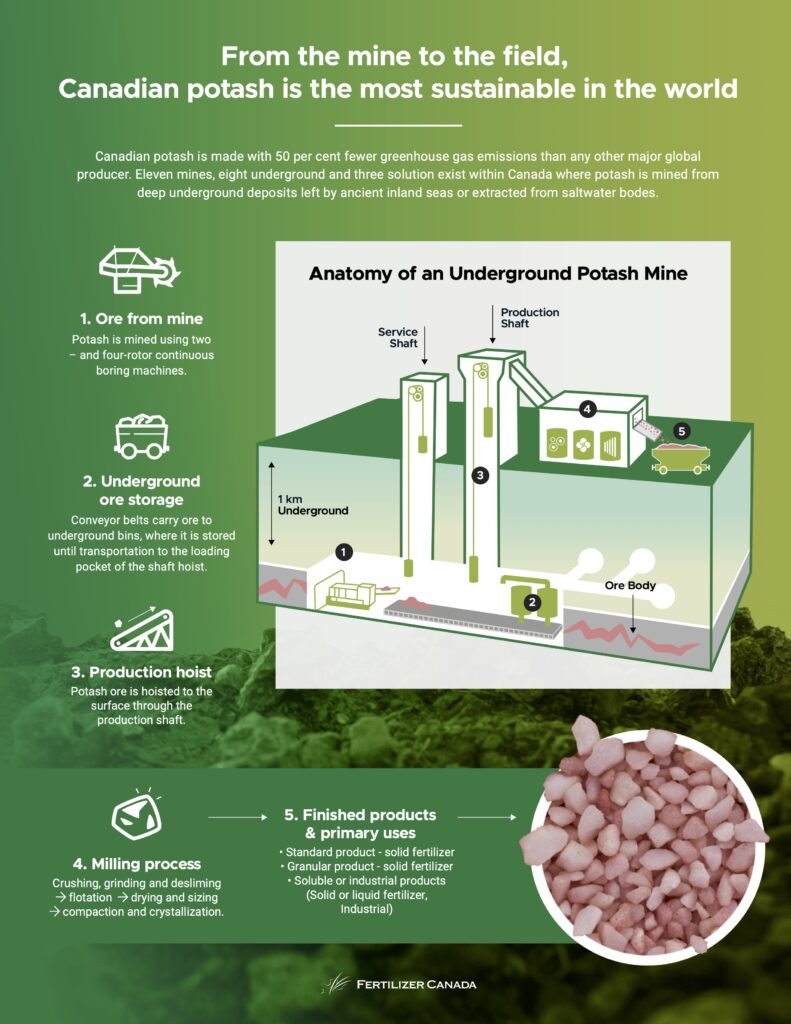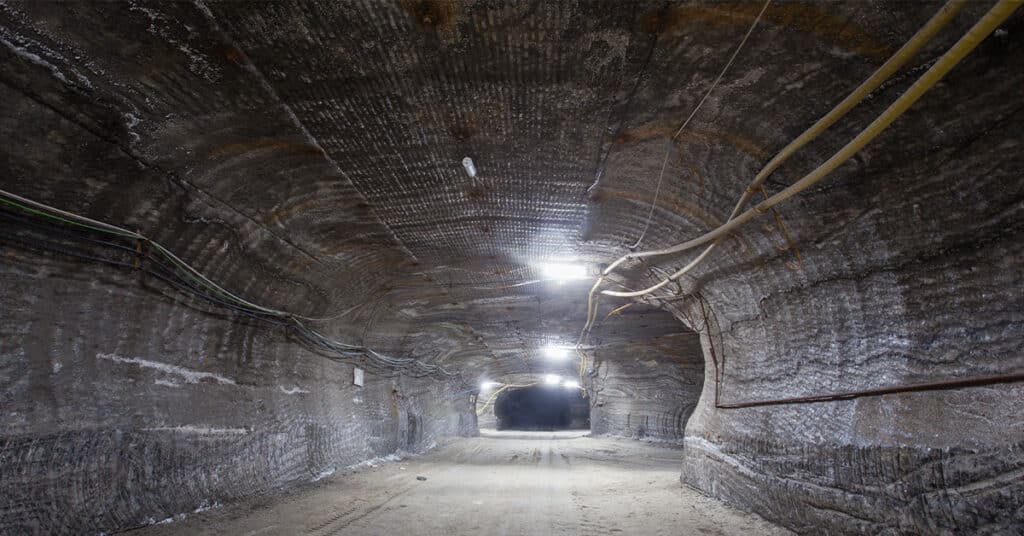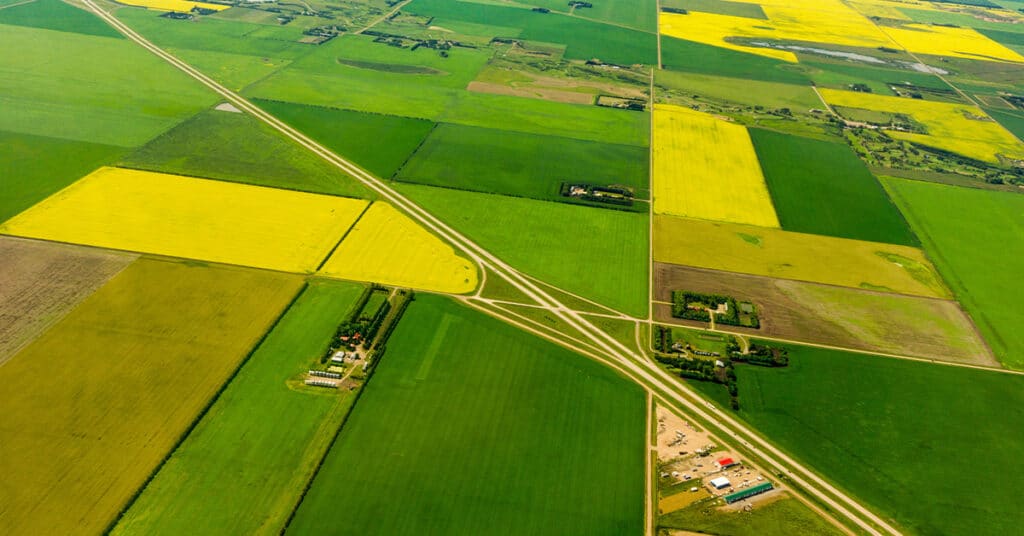Saskatchewan, a province in the middle of Canada, plays a vital role in global agriculture, mining and the economy. Known as the “Breadbasket of Canada,” Saskatchewan is an agricultural hub and the world’s largest potash producer, making it a key player in the global food supply chain. Let’s explore the journey of potash from the mine to the farm and understand its importance to Saskatchewan.
The Importance of Potash Mining in Saskatchewan
Saskatchewan is home to about half of the world’s potash reserves, making it a leader in potash mining. In 2023, Saskatchewan produced 21.9 million tonnes of potash, and the province accounts for around 40% of the world’s annual potash supply. (Government of Canada, 2025) Potash is a key ingredient in fertilizers, and its role in improving crop yields makes it an indispensable resource for global agriculture.
Potash mining is a massive contributor to Saskatchewan’s economy, accounting for 11% of the province’s GDP (Government of Saskatchewan, 2022). As the world’s largest exporter of potash, Saskatchewan is integral to the global fertilizer market. The province’s mines produce potash that supports agricultural productivity in countries worldwide, directly impacting food production and supply.
But it’s not just about mining; it’s about growth. With demand for agricultural products rising globally, Saskatchewan’s potash mining industry continues to expand, with new investments and technological innovations paving the way for even greater output in the years to come.

Saskatchewan’s Role as Canada’s Agricultural Powerhouse
Saskatchewan is often called the “Breadbasket of Canada,” and for good reason. The province is responsible for over 40% of Canada’s cultivated farmland (“Building Public Trust in Agriculture,” 2024), producing various crops, including wheat, canola, barley, and pulses. These crops are crucial for domestic consumption and makeup 20% of Canada’s annual agri-food exports ((“Saskatchewan Agriculture Exports 2023,”). In 2024 alone, Saskatchewan produced 35.5 million tonnes of crops, further solidifying its position as a key agricultural player on the global stage.
The Link Between Potash and Agricultural Productivity
So, what’s the connection between Saskatchewan’s potash and agriculture? Potash is one of the three essential nutrients—along with nitrogen and phosphorus—that plants need to grow and thrive. Specifically, potash provides potassium, which is vital for plant health. Potassium helps crops develop strong roots, enhances disease resistance, and improves yield.
The use of potash in fertilizers directly influences crop quality and strength. Research shows that at least 250 pounds of potassium should be applied to an acre of farmland for optimal crop growth. This number can range from 50 to 1000 pounds per acre (McKenzie, 2022), depending on the soil’s condition and the crops being grown. As a result, 95% of the potash mined globally is used in fertilizers, making it an essential tool for farmers worldwide.(Team, 2024)
In Saskatchewan, farmers rely on potash to ensure their crops remain productive and resilient. Without potash, agricultural yields would significantly decrease, negatively impacting the province’s economy and global food supply.

Potash and Saskatchewan’s Economy
The relationship between Saskatchewan’s potash industry and its agricultural output is crucial for the province and the broader Canadian economy. Potash mining drives the economy by providing jobs, stimulating exports, and supporting agriculture. Saskatchewan’s agriculture is globally competitive, and potash is at the heart of its productivity.
As the largest potash exporter, Saskatchewan directly contributes to global food security. The province’s ability to supply high-quality fertilizer helps increase crop yields and improve food production worldwide. In fact, potash plays such a critical role in global agriculture that it’s often referred to as a key ingredient in ensuring sustainable farming practices.
Farmers can grow more food on less land by using potash-based fertilizers, making agriculture more efficient and less reliant on expanding farmland.
In Saskatchewan, the journey of potash is more than just a story about mining—it’s about ensuring a sustainable future for agriculture and the global economy.
Sources
Building Public Trust in Agriculture. (2024). In Government of Saskatchewan.
Canada, N. R. (2025, February 4). Potash facts. Natural Resources Canada. https://natural-resources.canada.ca/minerals-mining/mining-data-statistics-analysis/minerals-metals-facts/potash-facts
McKenzie, R. (2022, March). Grain News. Glacier Farm Media. https://www.grainews.ca/crops/how-to-develop-potassium-fertilizer-recommendations/
Saskatchewan Agriculture exports 2023. (2024). In Saskatchewan Government. Saskatchewan Government. https://pubsaskdev.blob.core.windows.net/pubsask-prod/144246/SaskAgExports2023.pdf
Saskatchewan Potash Producers ramp up production | News and Media | Government of Saskatchewan. (n.d.). Government of Saskatchewan. https://www.saskatchewan.ca/government/news-and-media/2022/june/22/saskatchewan-potash-producers-ramp-up-production#:~:text=Saskatchewan%20is%20the%20largest%20potash,stroeder@gov.sk.ca
Team, I. (2024, September 26). What is Potash Fertilizer Made of? How is it Used? | ICL Group. ICL. https://www.icl-group.com/blog/what-is-potash-the-whole-story/

